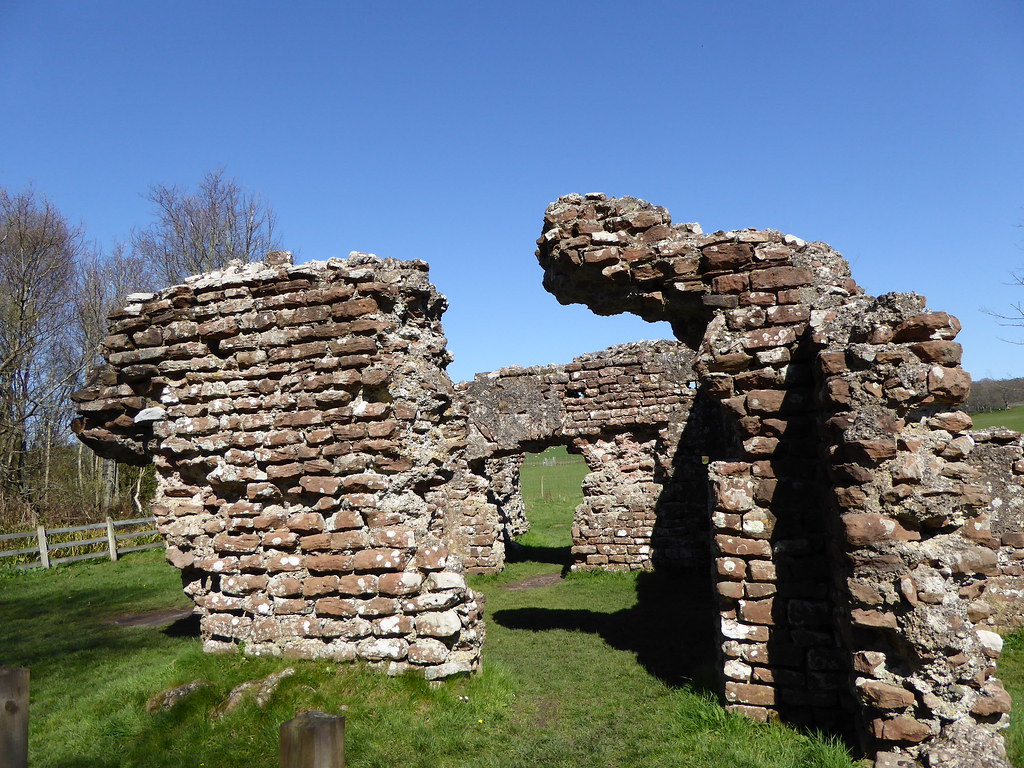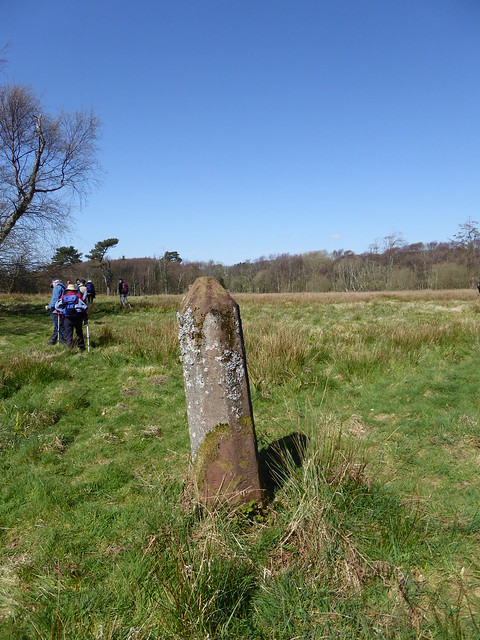Nothing remains of the four acre fort which was occupied from the AD130 to late 4th century, its west half destroyed by the estuary of the Esk and by the railway of 1850 however there is an enigmatic sandstone marker in a field nearby
I will have to have another attempt at this photograph for my intention was to show the marker with the Bath House in the distance to one side, however the clear blue sky and the sunlight dazzle on my camera screen means that, as I realised when I downloaded the picture, I have managed to place the marker directly over the distant Bath House. Doh.
There is a nice tour of the Bath House on You Tube here and as you will see there are always visitors pottering around. It may not be as impressive or well preserved as others in the world but this southernmost point of Hadrian's Wall Country was in Roman times a frontier. Members of the Cohors Primae Aelia Classica (First Cohort of the Aelian Fleet) garrisoned here and bathed within the walls, the fort's name of Glannaventa meaning 'market of the shore' means that merchants and travellers would have enjoyed the underfloor heating in the cold of winter. After the Romans left there was a great Viking settlement. I wonder if they took advantage of the baths.
An entry to ABC Wednesday, a journey through the alphabet, this week sojourning at R here.





7 comments:
Very interesting. I find digging up the remains of old buildings and the history that they hold just fascinating.
Interesting structures. Great to know about this place.
Interesting structures. Great to know about this place.
Sometimes ruins are more interesting than the original building. Thank you for showing us and linking your post to You Tube.
Wil, ABCW Team
I'm sure it was more private in the BEFORE picture!
ROG, ABCW
Fascinating info about the Roman occupation.
You would have enjoyed the Romans in Ravenglass project there Hildred when volunteers helped the archaeologists with field walking and excavation. Someone I know said it was hard work (especially for creaking old bones) but very rewarding because they found so much.
Post a Comment